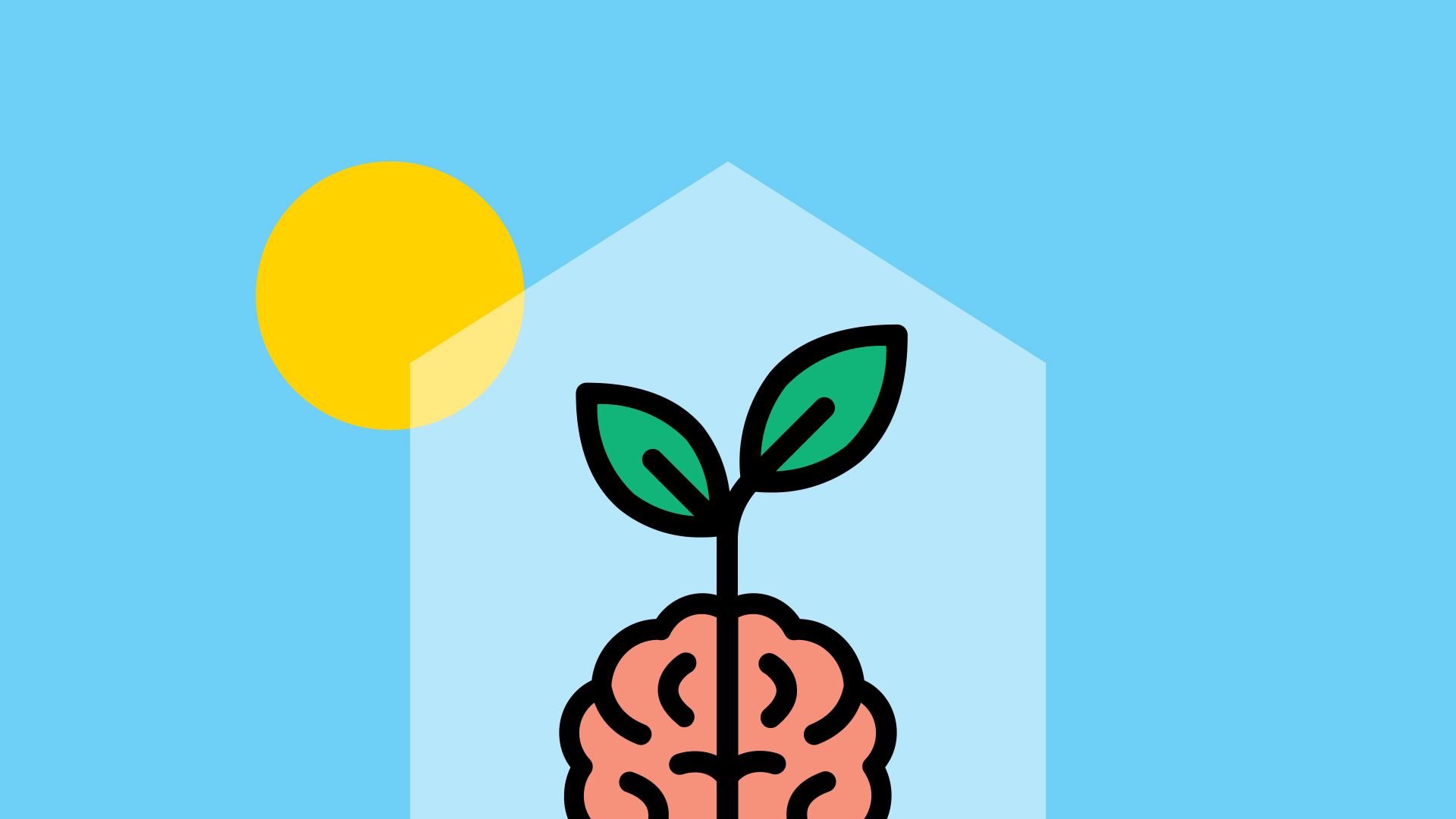Nurturing the Teenage Brain
Time Spent With Young People Can Yield Lifelong Gifts
Whether we’re parents or not, we stand to benefit greatly from time spent with teens and young adults in our communities—as long as we don’t let popular myths about younger generations hold us back.
It’s a cliché that the two child-development stages parents dread are the toddler and teen years. Themes of toddler tantrums or defiant, risk-taking teens turn up frequently in sitcoms, dinner-table conversations and parenting books.
While parenting challenges can arise at any age—or perhaps, for some, not at all—the reputation these two stages have earned is not really surprising. After all, both are phases of development when the brain undergoes some of its most dramatic life changes. But that makes them golden opportunities to help children lay the groundwork for future well-being. They’re also potentially some of the most rewarding years parents (and other adults) can spend with children. In the case of teens, however, the payoff can be even greater than many of us might suspect.
To differing degrees, both toddlers and teens are reaching new levels of independence. They’re learning to do more on their own and developing the foundation for relationships with both peers and adults (other than parents) that will enable them to become embedded in communities as they mature. In the toddler phase, parents may (quite rightly) feel they have a bit more control over this learning process than they do in the teen years; and there’s no question that the more we help boost younger children’s self-control and interpersonal skills, the easier it will be for them to expand on these capacities as teens. The need for adult guidance doesn’t evaporate during the teen years, however, although it naturally takes a different form.
The burst of growth that takes place in the human brain between the ages of 12 and about 24 is so dramatic that, even with the best foundation, its effects at times can try the emotions of adults and teens alike. But how much of this angst is just to be expected? Is adolescence destined to be a period of “storm and stress” characterized by teen-parent conflict, moodiness and risk-taking, as psychologists G. Stanley Hall, Anna Freud and others held? Alternatively, how much of the angst is simply a product of these expectations, fed by commonly held cultural myths about adolescence, as Margaret Mead and some of her fellow anthropologists have suggested? Historically, these have been the two primary camps on the topic of teen behavior. We might recognize them as yet another manifestation of the age-old nature-versus-nurture debate.
“Long gone are the outdated debates about ‘nature versus nurture,’ as we can now all agree that the brain is a product of both a genetic or biological outline and the environment.”
That debate, as we now know, placed the question in completely the wrong frame. Nature and nurture both exert a powerful influence. Taken in this light, it’s easy to see why researchers in recent years have realized that, yes, there is something powerful happening in the brain during adolescence; but no, it doesn’t have to be a time of difficult distress and angst for teens and the adults in their lives. Hall and Mead were both right.
Psychiatrist and author Daniel J. Siegel articulates the resulting challenge well. “The key,” he writes, “is for the adolescent and the adult-who-once-was-an-adolescent to recognize these important brain changes and learn to navigate these years constructively and collaboratively in order to keep communication open between them, to optimize life for everyone, and to avoid tragic endings of risky behaviors.”
Accomplishing this requires taking an honest look at some of the myths we sometimes hold about the teenage brain—myths that not only separate parents and teens but may also alienate other adults in a teen’s community, who could otherwise be important to their support network. Once we let go of these common myths, we’ll be in a better position to engage with teens constructively, and to reap some personal benefits along the way.
Myth-“Understandings”
Depending on the source, we might see these myths articulated slightly differently. In his 2013 book Brainstorm: The Power and Purpose of the Teenage Brain, Siegel points to three generalities that adults often accept about teens:
- Raging hormones are the culprit behind challenging behaviors.
- Teens are immature and just need to “grow up,” a process everyone just has to endure with “as few battle scars as possible.”
- The work of adolescence is to develop independence from adults. (It may be difficult to suspend disbelief on this one, but we’ll find out what he means in a bit.)
Child and adolescent therapist Darby Fox goes further in her 2020 book, Rethinking Your Teenager, by identifying eight myths:
- Teens are young adults who choose to act immaturely.
- They behave badly because of raging hormones, and there’s nothing to be done about it.
- They shut out adults and listen only to peers.
- They don’t need a lot of sleep; they’re just lazy.
- They’re great multitaskers, which allows them to accomplish everything they need to do.
- Drugs and alcohol impact them only temporarily.
- They do risky and stupid things just to irritate and defy adults. (Another version of this myth, says Jess P. Shatkin of the NYU School of Medicine, is that they do such things because they think they’re invincible.)
- They struggle with mental health disorders because they’re spoiled and don’t want to deal with life’s realities.
To understand why these myths persist, and to overcome what might be an easy acceptance of them, it helps to have a window into how the teenage brain typically develops. You don’t have to be a neuroscientist to get the general idea.
“Among all the organs of the human body, the brain is the most incomplete structure at birth. . . . All the internal wiring changes during development. Brain growth, it turns out, takes a lot of time.”
Brain-Building
From the time we’re born, the brain continues to be built—connected and integrated—from the ground up and from back to front. We’re wired first in the structures that help us operate in our environment on a basic level through our senses, allowing us to give those first signals to our parents about our needs as infants. As parents responsively supply those needs, the brain’s limbic system develops connections that support healthy emotion regulation and social functioning.
Acting as a sort of gateway to the limbic system are a pair of almond-shaped clusters known as the amygdalae. For our purposes here, they can be seen as the home of our fight/flight/freeze response. Our environment begins to imprint on the limbic system even before we’re born. Gradually through childhood, the developing midbrain becomes increasingly integrated and agile, but the frontal lobes—the part of the brain responsible for what we might call the “stop, think, restrain” response—isn’t fully wired until we’re about 25.
As neuroscientist Frances Jensen puts it, “the brain of an adolescent is nothing short of a paradox. It has an overabundance of gray matter (the neurons that form the basic building blocks of the brain) and an undersupply of white matter (the connective wiring that helps information flow efficiently from one part of the brain to the other)—which is why the teenage brain is almost like a brand-new Ferrari: it’s primed and pumped, but it hasn’t been road-tested yet. In other words, it’s all revved up but doesn’t quite know where to go.”
But it isn’t static. Through a very active and crucial process, new, faster connections between neurons (white matter) are being developed as teens learn. Excess grey matter is weeded out to make room for more important and efficient connections. Parents and other adults play a role in this pruning and connecting process, just as the rest of the teen’s relationships and learning environments do. We’ve all heard the adage “Use it or lose it.” In simple terms, the connections we use get strengthened, while the ones we don’t use get trimmed away. As adults, we want to help teens smooth out the useful connections by reinforcing positive behaviors so they’ll be repeated often.
With neurotransmitters firing about twice as fast as they do in the adult brain, there’s a lot going on in your teen’s head. Adolescents can absorb new information much faster than adults can, which makes it a golden age for advancing their growth.
Until this process is complete in our early to mid-20s, however, the frontal lobes aren’t fully wired in. What does this mean in practical terms? Teens will be in various stages of developing abstract thinking skills for long-view problem-solving, and they have yet to develop other important capacities, such as the ability to follow through on intentions, fully regulate emotions, or consider the consequences of their behavior. This is why they seem emotional and impulsive. It’s not because they don’t want to be responsible and reliable. And it’s not because their hormones are raging. Adolescents don’t actually have higher levels of hormones than young adults do. Again, the frontal lobes aren’t as well wired in as the limbic system is, and the latter is where sex hormones are most active. So the issue isn’t so much that hormones are raging but that the processes they’re triggering are new ones, which, with guidance, teens are capable of learning to handle.
This is yet another situation where adults can take a high-nurture, high-structure approach to help teens learn to regulate their behavior—connecting first with understanding (“I get that you’re feeling ––––. What can I do to help?”), while still holding them to responsibilities and expectations. “As parents,” Fox explains, “we don’t want to give our adolescents the idea that they can’t control their behavior; this is the equivalent of a free pass to act reckless and disrespectful. Instead, we want to help our children develop the skills to anticipate and regulate their moods, desires, and emotions.”
In short, teens need guidance while they build on these skills and strengthen pathways that aren’t firing reliably yet. They need close connections with adults who can function much like scaffolding on a new building as the necessary structures are being built.
Sometimes, however, we adults let our own limbic systems rule when interacting with our kids—at which times we make poor scaffolding. Probably all parents have lost their temper with their children at some point. But activating our teens’ limbic system (the lower, very sensitive fight/flight/freeze system) by defaulting to our own limbic system (becoming angry, yelling, putting them on the defensive) actually shuts down their capacity for learning from us. This ignites an endless cycle of stress that gets passed back and forth between parent and teen like a hot potato.
The better way is to effectively show our children, from the youngest ages on, how it’s done. We do this by making it a habit to activate our prefrontal cortex. Children need to see us, the adults in their lives, practicing control, stepping back to think through our response, and then opening the lines of communication by connecting to them through their emotions first. Positive emotional connection is the essential key that opens their brain to learning from us.

Recognizing the Gifts
Knowing that the teen brain is still “under construction” may not ease a parent’s anxiety. But for everything that can be seen as a downside, researchers point to far greater upsides—even gifts—not only for teens but for the adults in their lives. The teens we interact with can actually help us regain characteristics we may have gradually let go as our own teen years fall further into the past.
What are some of these gifts? Siegel boils them down to four general categories and suggests how teens and parents can make the most of them.
1. Emotional Intensity
Some modern cultures see emotional intensity as a negative trait, while others recognize it as a zest-infusing essence that makes life worth living. While we don’t want intense emotion to rule us, it’s a vital component of life, love, resilience and the fully lived human experience. A fear of feeling negative emotions can hold us back, with the result that we don’t experience fully satisfying positive emotions either. Living life alongside teens and sharing deeply emotional experiences can help adults recapture enthusiasm and an appreciation for connecting with one another.
2. The Drive for Social Engagement
On the downside, a need for social engagement may push teens into peer-dominated silos and leave them vulnerable to increased risk-taking. But on the upside, it makes them open to expanding their support network. Social connectedness is one of the most important measures that predicts health and longevity, mental well-being, and lifelong contentment. The need to connect with peers is so acute during the teen years that peer rejection can be almost crippling. Teens need adult relationships to help them navigate the social tripwires that can drive them into themselves if they’re left on their own. “While pushing away from adults is universal,” says Siegel, “what . . . may be unique to modern life is the increasing number of adolescents who respond to these challenges by completely excluding adults from their lives.” While we tend to think our goal is to help our children achieve independence from adults, the actual point for all of us (not just teens) is healthy interdependence, not independence. As adults, we may need to recapture that drive to engage socially with others. It’s an easy thing to lose in our modern, busy lives; but it’s a gift that, in a way, is connected to being open to new experience.
“For both adolescent and adult, keeping the lines of communication open is the most basic principle of navigating these years well.”
3. The Novelty-Seeking Drive
The drive that convinces adults that teens think they’re invincible is, in fact, what makes teens open to new experiences. Channeled in the right way, this drive can grow into a stable part of their makeup. Openness is one of the “Big Five” personality traits (the others being conscientiousness, extraversion, agreeableness and neuroticism), and it allows us to enjoy passionate, adventurous lives and find new, creative ways to solve problems. That said, the fact is that teens don’t think they’re invincible. As Shatkin points out, teens actually think the chances of something bad happening to them are higher than they really are. When asked, they often overestimate the likelihood that their behavior will get them in trouble. So why the reputation for risk-taking? Until the prefrontal cortex is fully wired in, each of the four drives discussed here plays on them with more force than they can restrain without some initial help. Again, here’s where healthy interdependence with adults can make all the difference.
4. Creative Exploration
Creative exploration can be a beautiful gift and a healthy by-product of the changes happening in the adolescent brain. As new connections allow for more abstract reasoning, teens try outside-the-box approaches that lead them to question almost everything. This drive is what makes us wonder about the meaning of life and how we fit into it. Psychologists call it identity consciousness, and it expands significantly in adolescence. Adults have much to offer teens as they search for meaning and direction; and teens in turn have much to offer adults, helping reawaken the experience of the sense of purpose and awe we may have allowed to become dull in the mundane day-to-day.
Summing It Up
The healthy interdependence that is key to parents and teens navigating this period well takes intention. We (as adults whose prefrontal cortex is, we hope, fully wired in and well practiced) must consciously reject focusing on what we may see as downsides of the brain changes happening in our teens. Instead, we must consciously turn our hearts and minds to the gifts that our teens are developing—gifts that they won’t be the only ones to enjoy.


